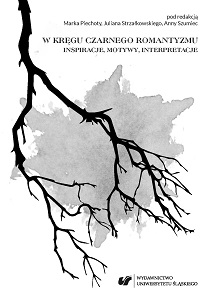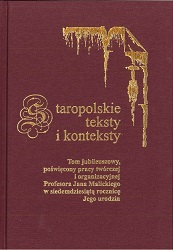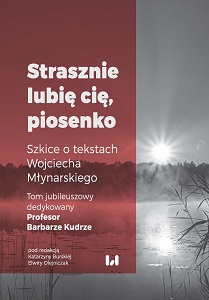
Demony Pana Kaniowskiego. Heterogeniczność utworu Dominika Magnuszewskiego
“Demons of Mr Kaniowski. Heterogeneity of the work by Dominik Magnuszewski” is an attempt to address the question: what is the little known, ambiguous, posing fundamental questions, heterogeneous work from 1841 entitled „Mr Kaniowski” by Dominik Magnuszewski about? A gentlefolk’s tale based around the figure of a starost-cruel, Mikolaj Bazyli Potocki, put through the filter of a horror novel, through the use of the conventional Gothic props room (a dark castle, slaughter at the castle, a bloody feast, the ghost of a mistress, a gothic villain and his demonic accessory) allowed Magnuszewski to make closer observations on human nature, rather than just disclosure the dark sides of the Sarmatian tradition. „Mr Kaniowski” seems to be a tale of madness, whose sources should be sought in the passion and the crime committed by the principal character, a tale of fears and internal struggle with one’s own demons.
More...

